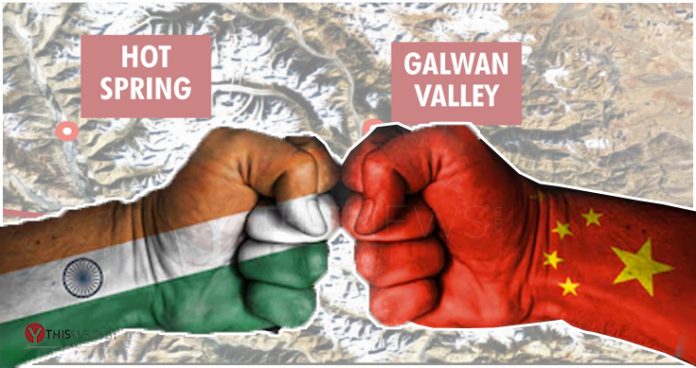Dharamsala: India has been engaged in many military aggressions with the Chinese army. The one at Galwan Valley wasn’t the first one and knowing China, it won’t be the last, according to the CTA President, Lobsang Sangay. Geographically, India and China never had a common border. This is infact the Indo-Tibet border shared between India and Tibet, not China. India needs to keep in mind the geopolitics vitality of Tibetas one of its core issues and work on its strategies accordingly.
The Central Tibetan Administration (CTA) President Lobsang Sangay, also regarded globally as the Prime Minister-in-exile spoke about the recent clash between India and China which led to the death of 20 Indian soldiers.
“China recognised Tibet as a core issue in terms of China’s national security and development since 2008, you know, for instance, the Chinese President Xi Jinping has been on the record to say China’s national security and stability depends on security and stability of Tibet,” Sangay, the youngest to head the government-in-exile in a conversation with IANS on Sunday.
“That’s how Tibet is geopolitically important for China. Knowing the strategic significance of Tibet, India should consider the geopolitical importance of Tibet as one of its core issues,” he said.
As far as the last military faceoff is concerned, Mr.Sangay said, “Ongoing China’s military aggressions across the Himalayas are not the first military aggression by China and it won’t be the last.
“As matter of fact, India never shared a border with China, it’s the Indo-Tibet border. Tibet served as a zone of peace in the form of a buffer between India and China for more than thousand years ago. Today, it is no longer the case since China’s invasion of Tibet in 1950.
“By invading Tibet, China has militarized the entire Tibetan Plateau, which poses security threats to Tibet’s neighbouring countries. For instance, China’s military encroachment in Doklam in 2017, Ladakh and Sikkim are just the tip of the iceberg.”
The 51 year old CTA presidentfurther spoke about China’s plans to occupy East India. He also said that the violent clash was uncalled for and not ignited. Moreover, he mentioned the ‘middle way approach’ adopted by the Tibetan spiritual leader Dalai Lama since many years to better the ties and solve problem between China and Tibet.
“Last 70 years, we have been saying that we learn a lesson from Tibet’s experience. When Tibet was occupied, Mao Zedong and Chinese communist leaders strategised that Tibet is the palm and Ladakh, Nepal, Sikkim, Bhutan and Arunachal are the five-finger.
“This is China’s strategic design to expand its expansionist policy to South Asia. By invading Tibet the palm, now Chinese troops are coming into these five fingers.
“At the same time, China is putting pressure on India’s immediate neighbours Nepal, Bhutan, Bangladesh, Sri Lanka and Maldives for encircling India to check India’s existence in Asia,” Mr. Sangay said.
Furthermore, when asked about the economic outcome of China by boycotting its products as Beijing is the main partner for trades with many countries, along with being the manufacturing centre, Mr. Sangay said, “I think collectively, countries must cut down their trade dependence on China. There are a lot of things that can be done on the government level, also I think celebrities are a major influencer when it comes to consumerism and therefore, they shouldn’t promote China made products.”
“As I keep saying, a resolution for resolving the Tibet issue is making Tibet a peace zone,” he said.
“Asia’s future cooperation and development depends on the nature of India-China relations. Having robust relations between China and India, Tibet issue must be resolved, it is because Tibet issue lies the centrality of China-India relations.
“Creating Tibet as a zone of peace in Asia is a win-win approach. Having said that, I see, the future of Asia depends on the Tibet issue,” Sangay was categorically clear in his saying.
Mr. Sangay is currently serving his second consecutive term for Presidency. Speaking about CTA resolving issues between Tibet and China, he said, “As per our strategy as a concern, prepare for the worse and hope for the best. We hope for the best to resolve our issue as soon as possible, at the same time, if not, we prepare for the worst situation.”
According to current India-China conflicts ranging from border dispute to international relations, he said, “I see that our ‘middle-way approach’ is the best solution to resolve our issue as well as China-India’s conflict too”.
Tibet has been seen solving issues with China based on Dalai Lama’s ‘middle way approach’ since the 1970s.
After receiving immense support from the world, CTA has gripped it’s ‘middle way approach’ ever further. China will very likely attain the position and power it desires in the worldthrough means of coercion and military aggression along with violation of largely all human rights.
This approach speaks about neither needing a separation from the People’s Republic of China nor a great degree of
The middle-way approach neither seeks separation from the People’s Republic of China nor a situation for establishing a self-government (autonomy) but genuine autonomy for all Tibetan people under a single administration in Tibet.
“To gain international legitimacy to China, I hope that Chinese leadership will realize how important it is soon,” Mr.Sangayconcluded saying.







